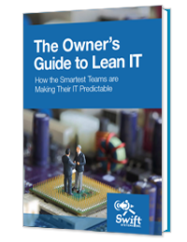Breaking Down SOC 2 Reports
As we learned earlier, SOC 1 reports handle a service organization’s capability to perform financial services for another company. It helps companies decide which SaaS company to entrust with their financial data. SOC 2 reports are a whole different ballgame.
SOC 2 reporting sets up regulations that a company must comply with in order to be considered secure. Compared to other regulations, SOC 2 is a minimal requirement. Whereas SOC 1 focused on company capabilities, SOC 2 has a sharp focus on security.
Who Needs SOC 2?
SOC 2 reports are essential for any SaaS or cloud-computing provider. SOC 2 reports ensure that service organizations are storing data with the proper security. This is crucial as security risks include malware, data theft, and even ransomware.
SOC 2 protocols were designed for IT providers, including managed service providers, cloud computing vendors, data centers, and SaaS companies.
Without the proper security, a company’s data could be stolen or corrupted.
What are the SOC 2 Requirements?
SOC 2 reports base their criteria for managing customer data on five different principles. These include security, availability, processing integrity, confidentiality, and privacy.
Each principle has its own set of rules and regulations a company must meet in order to receive a SOC 2 certification. However, unlike many other regulatory requirements, it’s up to each specific company to determine how they want to meet those rules.
Security
The security principle of SOC 2 requires firewalls, two-factor authentication, and intrusion detection. The main goal of the principle is to protect the data from unauthorized access. This helps to prevent unauthorized use of sensitive data, data theft, and breaches of confidentiality and privacy.
Of course, as cyberattacks have increased over recent years, the security principle also focuses on the prevention of malware attacks. Particularly nasty strains like WannaCry or CloudBleed can cost company’s thousands of dollars for the return of their data or cause leaks of confidential information.
By meeting all the security requirements of SOC 2, your customers will know their data is safe with you.
Availability
Availability refers to a minimum level of network performance for system availability that is set by negotiation between the service organization and the customer. Despite the fact that this requirement can change as based upon the agreed-upon minimum level, this principle still has a goal that promotes the security of a system.
The Availability principle handles security aspects like performance monitoring, disaster recovery, and security incident handling. While these may not seem like cut-and-dry security measures, low network performance can increase loopholes to be exploited by malware, and poor handling of security incidents can slow down data recovery.
Processing Integrity
The Processing Integrity principle is akin to quality assurance. The purpose of excellent processing integrity is to ensure that your customers receive the best data protection and processing. However, processing integrity also ensures that a service organization is monitoring the data processing process appropriately. Without proper monitoring, malware can come through a poor security patch or unauthorized data access can occur.
Confidentiality
Confidentiality is pretty self-explanatory. When storing sensitive data, you need to be confident that no one with improper access will see your information. Or, no one with authorized access will use the data improperly or share information they’re not supposed to.
To ensure this, data encryption, access controls, and firewalls can all be deployed successfully.
Privacy
The privacy principle of SOC 2 protects an individual’s personal identifiable information, as well as any sensitive data that requires an extra level of protection. All of this data must be protected appropriately according to its sensitivity and a service organization must prevent all unauthorized access.
Privacy is a huge issue. With Facebook and Google collecting more and more data on its users, privacy is a large concern for many individuals. SOC 2 can help to prevent situations like the Equifax security breach from occurring.
What’s the Difference Between Type I and Type II?
The difference between SOC 2 Type I and Type II is very similar to the difference between Type I and Type II reporting for SOC 1. A Type I report deals with policies that were enacted at a specific point in time. A Type II report evaluates systems over a longer period of time – at least six months.
A SOC 2 Type II report is the most comprehensive security evaluation within SOC protocol. When a company achieves this type of certification, it has proven that its systems are set up to keep client data safe.
Swift Systems Knows SOC 2
As a managed IT service provider, Swift Systems knows SOC 2. We believe that you deserve the highest-level of security for your data. You shouldn’t have to worry about unreliable systems or so-so access control. Swift Systems does it all.
We’ve served over 50 businesses and protected over 2400 devices. When you need great IT that aligns with SOC 2 requirements, you need Swift Systems.
Interested in working with us? Contact us today.

IT systems are foundational to modern businesses. Too often, that foundation is unsteady. Unpredictable outages, insecure networks, and unreliable performance from mission-critical systems can jeopardize your entire business.
There’s a better way. Learn how.
Get in touch with us for a free consultation with one of our technical experts. We’ll review your current systems, assess your needs, and identify the coverage options to best meet them.
Get in touch with us by phone:



 (3 votes, average: 3.67 out of 5)
(3 votes, average: 3.67 out of 5)